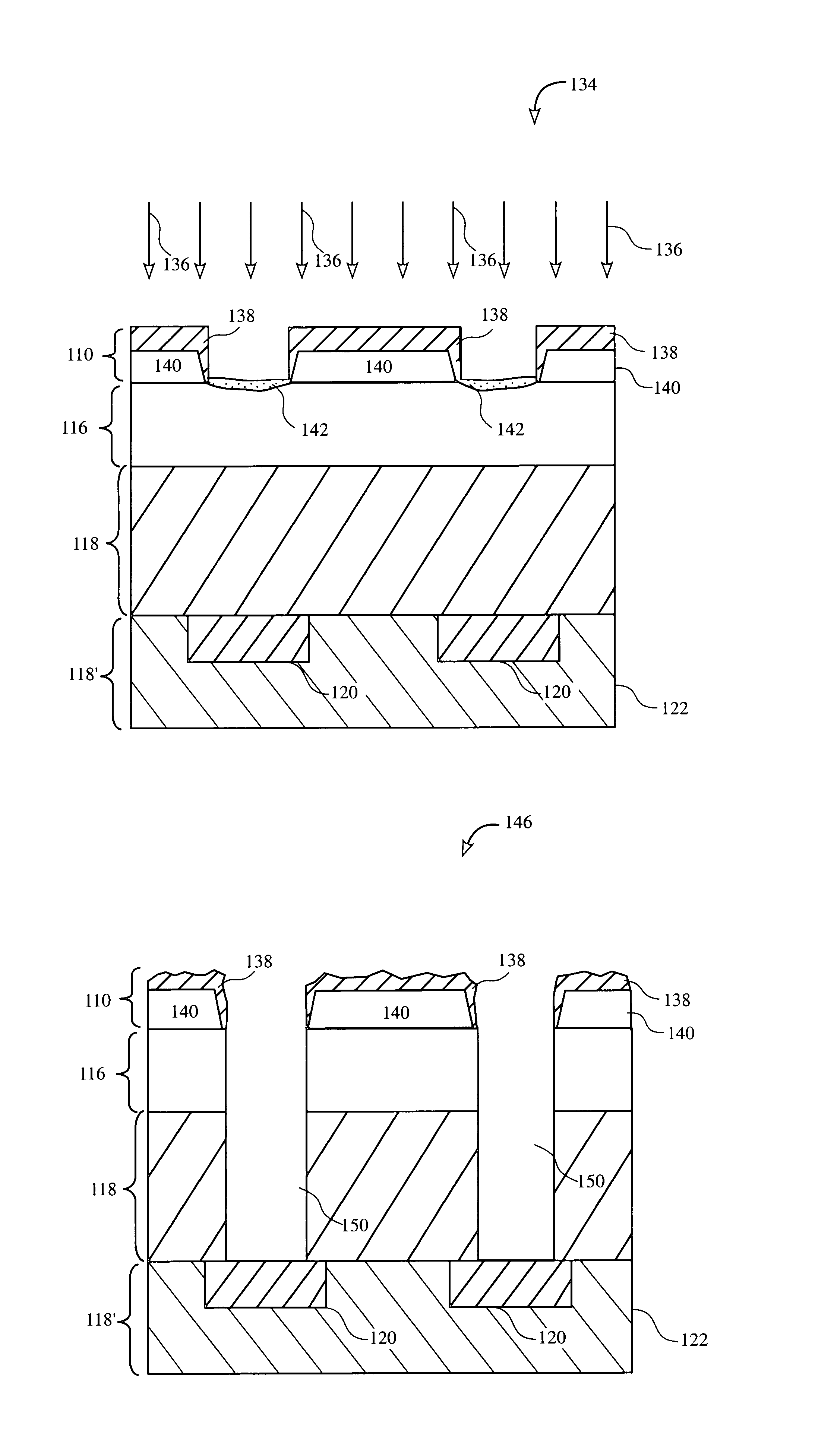Method for argon plasma induced ultraviolet light curing step for increasing silicon-containing photoresist selectivity
a technology of argon plasma and photoresist layer, applied in the field of lithography, can solve the problems of insufficient improvement of etch resistance, difficult to accurately perform etching operations, and more critical lithography techniques to pattern holes or trenches in the dielectric, so as to increase the selectivity ratio of the underlying photoresist layer, improve etch profile control, and increase the effect of selectivity
- Summary
- Abstract
- Description
- Claims
- Application Information
AI Technical Summary
Benefits of technology
Problems solved by technology
Method used
Image
Examples
Embodiment Construction
[0024]An invention is described for an apparatus and a method for enhancing the selectivity of a silicon containing photoresist thereby improving etch profile control. It will be obvious, however, to one skilled in the art, that the present invention may be practiced without some or all of these specific details. In other instances, well known process operations have not been described in detail in order not to unnecessarily obscure the present invention.
[0025]The embodiments of the present invention provide an apparatus and method for an improved selectivity of a silicon-containing photoresist which in turn, allows for amelioration of a subsequent etch profile. In one embodiment, a hardened layer is formed in a silicon-containing photoresist by exposing the developed silicon-containing photoresist to ultraviolet (UV) light. In accordance with one embodiment of the invention, the UV light is generated by striking a plasma containing an inert gas such as neon, as will be described be...
PUM
| Property | Measurement | Unit |
|---|---|---|
| temperature | aaaaa | aaaaa |
| pressure | aaaaa | aaaaa |
| pressure | aaaaa | aaaaa |
Abstract
Description
Claims
Application Information
 Login to View More
Login to View More - R&D
- Intellectual Property
- Life Sciences
- Materials
- Tech Scout
- Unparalleled Data Quality
- Higher Quality Content
- 60% Fewer Hallucinations
Browse by: Latest US Patents, China's latest patents, Technical Efficacy Thesaurus, Application Domain, Technology Topic, Popular Technical Reports.
© 2025 PatSnap. All rights reserved.Legal|Privacy policy|Modern Slavery Act Transparency Statement|Sitemap|About US| Contact US: help@patsnap.com



